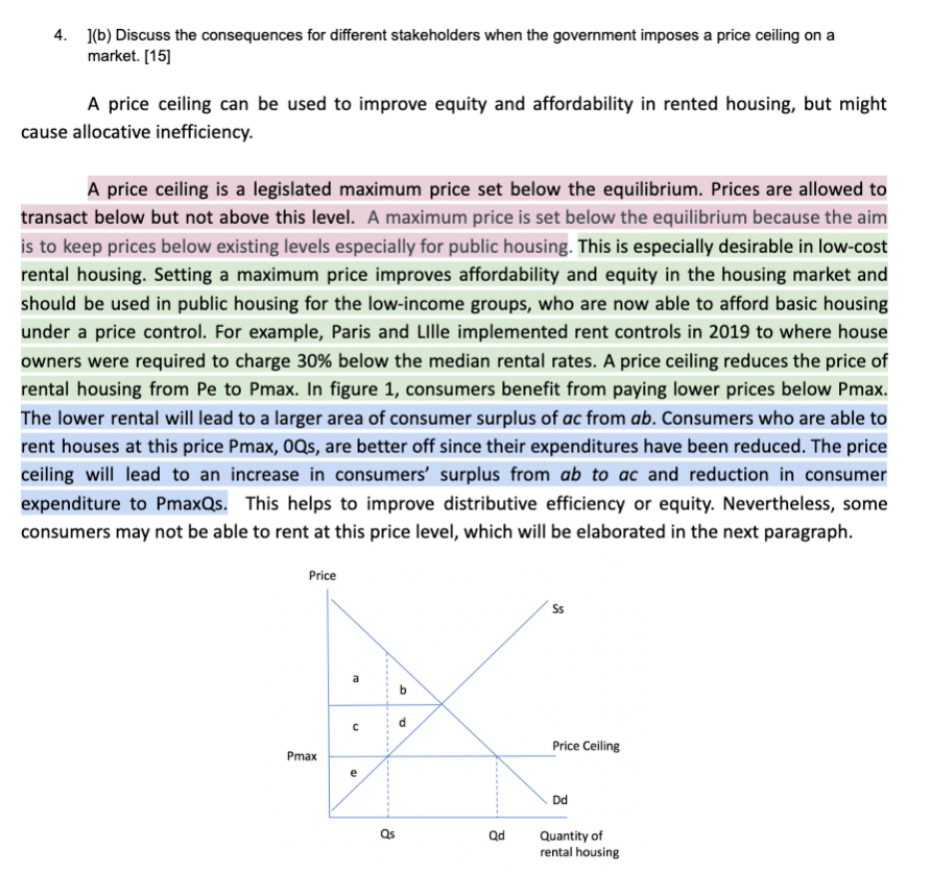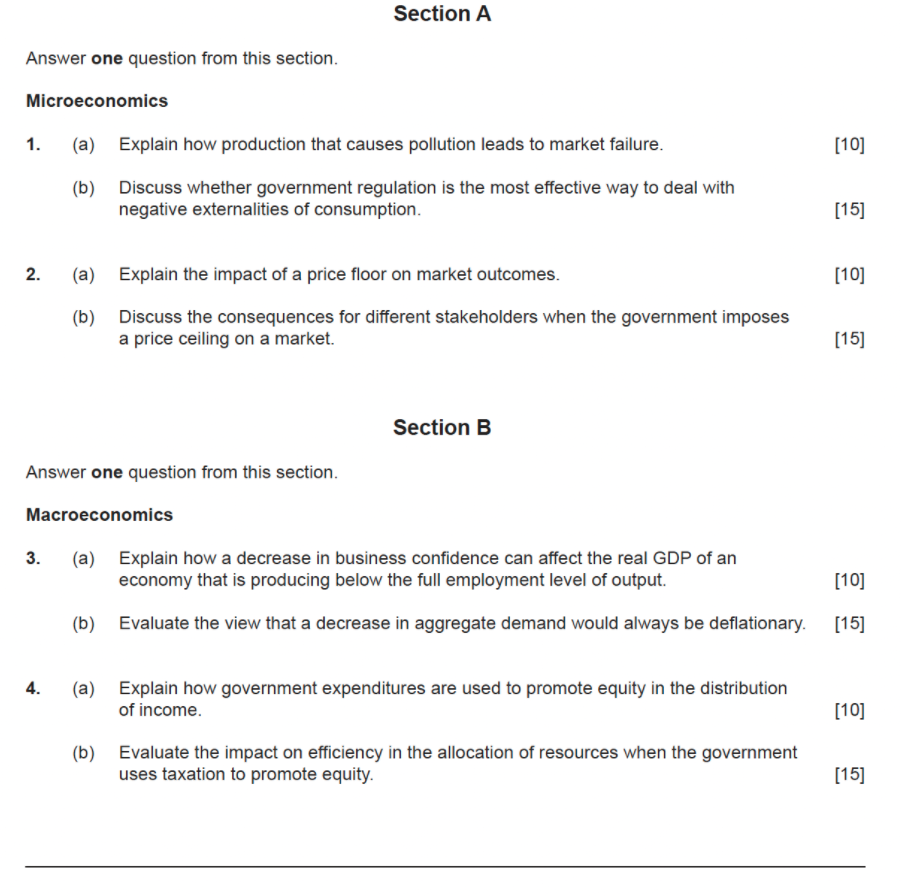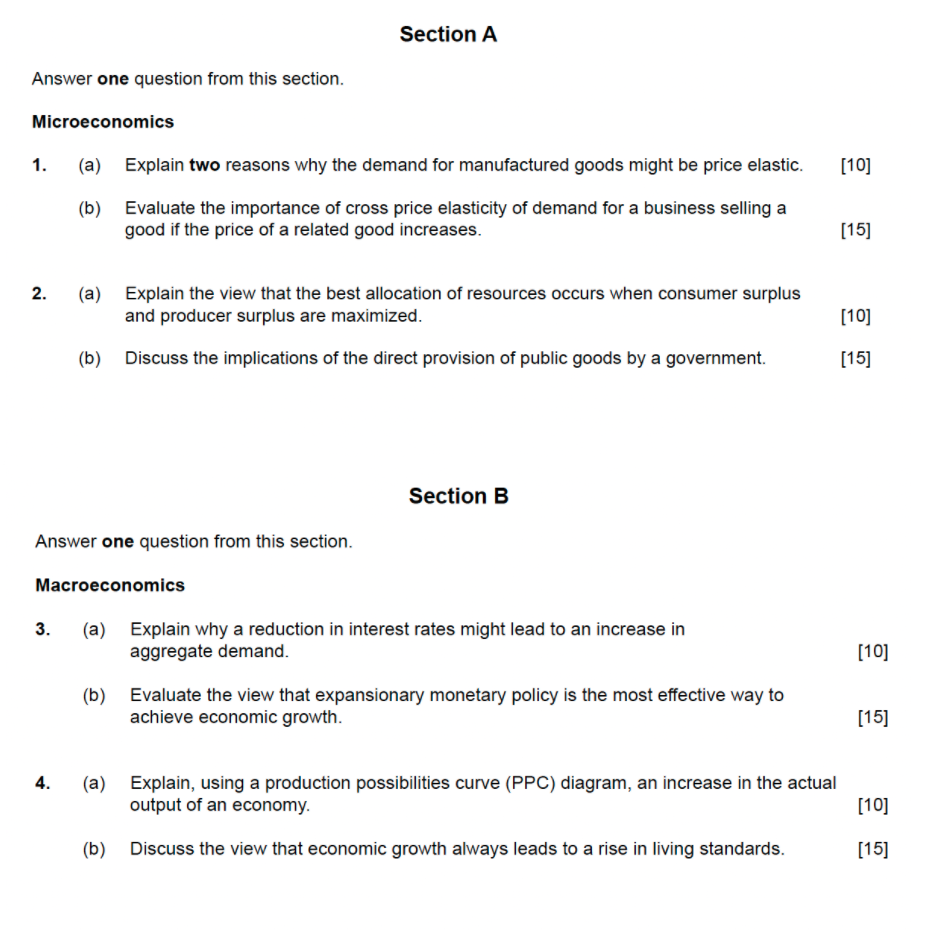2022 marks the first year of the IB Economics new assessment format. There are a few key differences between the previous and current syllabus.
Paper 1 duration has been increased to 1hr 15min from 45 min.
Paper 2 duration has been increased to hr 45 min from 45 min.
Paper 1 and 2 can now be tested from all chapters in the syllabus. In the previous syllabus, they could only be tested from selected modules – Paper 1 Microeconomics and Macroeconomics. Paper 2 International Economics. This means that questions will be more extensive and hard to predict.
To do well in the new IB syllabus, students must be familiar with the command terms used at each assessment objective level to understand the depth of answers required in examination questions. Also, take note of the following:
Diagrams
Diagrams are highly important in the new syllabus. With more emphasis on 4 mark short answer questions, the IB expects students to include well labelled and clearly drawn diagrams. To do well, show specific knowledge and understanding of key concepts and how they link to diagrams. For your revisions, we recommend you to prepare a list of all the relevant diagrams for each topic and practise drawing these prior to your exams. You should have a system to ensure every curve and axis is properly annotated. When deciding what diagrams to use, you should be aware of what diagrams correspond to each syllabus point (e.g. Lorenz curve for equity and the Philips curve to inflation + unemployment). When choosing between Keynesian and Monetarist/New Classical, you should consider which diagram shows everything that you want to mention in your evaluation.
Examples
Students are expected, where appropriate, to illustrate their answers with real-world examples to reach the highest markbands. Examples should be used to highlight economic concepts, theories and relationships in the real world. When examples are used, students should not just state the example (as this is too limited) but should contextualise explanation of the example in relation to the question asked. For instance, students should explain how Quantitative Easing is used by various central banks to increase liquidity during an economic crisis, and must be complemented with the use of fiscal policy.
Economic terms
Students are expected to demonstrate the ability to appropriately define, use and apply the economics terms included in the “Syllabus” section. Each answer should have an economic theory, application of example, then reference to diagrams.
Evaluation Points
Here is where Economics can get challenging. Our first recommendation is that you learn the evaluative points from various parts of your textbook. Many of the new questions begin with “Evaluate with regards to …” before listing a number of useful arguments in favour of and against. You should review each chapter to know the topic objectives prior to your revision. For instance, the chapter on Inflation always tests for the effectiveness of various policies used by central banks worldwide.
Getting Top Marks
Once you’ve prepared your definitions, diagrams, and evaluative points, and you’ve practised putting these three types of content into a well-constructed essay, it may be time for you to look at ways to extend yourself. You also need to practice conveying your knowledge in the given time. Writing essays under timed conditions to imitate exams is essential. So, you should always aim to write a few polished pieces to understand exam requirements. In doing so, you will discover new ways of phrasing concepts concisely, ultimately saving time in the long-run. When short on energy, you should try writing a simple plan for past paper essays. This is also valuable preparation to prevent you from wasting time thinking on your actual exam day.
Overall Economics can be a tough exam, but with a good work ethic, it’s a subject you can excel in! Studying can be intimidating at times, but once you break it down, your load will become a lot more manageable.
These practices will consolidate writing techniques and ensure that Dylan is able to reach L3 and L4. I have noticed from the past round of exams that he is not able to organise his essay the way IB requires. After weeks of practice, he has shown improvements however is still inconsistent. More drilling is needed to ensure consistency. This same writing requirement applies to paper 2. Once he understands the framework and can apply consistently to all questions, he will need to make sure he has reviewed all textbook content for the exams. There are some core topics and content that are always tested in the final exams, and remain a priority. I have reviewed with Dylan, and will continue to focus on them in the final revision.
Regarding the prelims, ACS prelims tested 2 obscure concepts that only came out once in the past 30 sets (10 years worth of Paper 1 questions). Additionally, they tested a comparison of 2 policies(which is not the IB format. IB tests for 1 core policy only from the samples on the next page). We can expect ACS grade boundaries to be low as a result. Of course, Dylan did not study for some of the core chapters so he could not do the easier questions.







